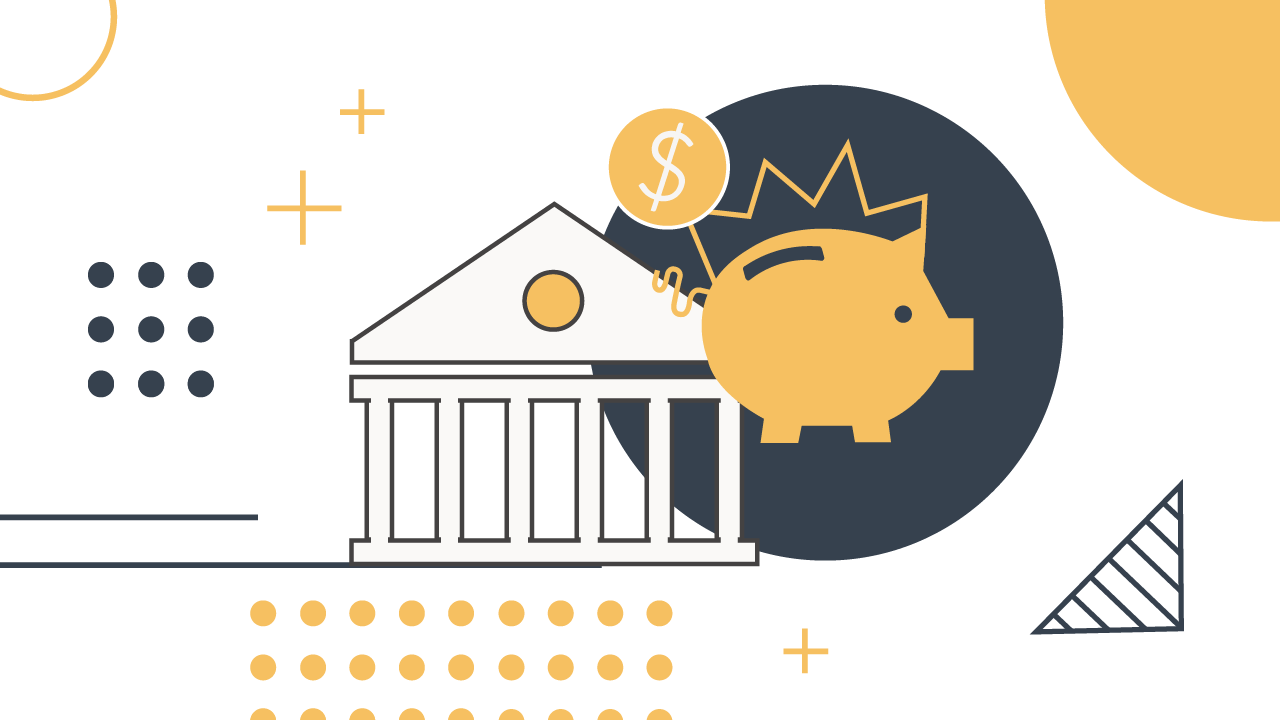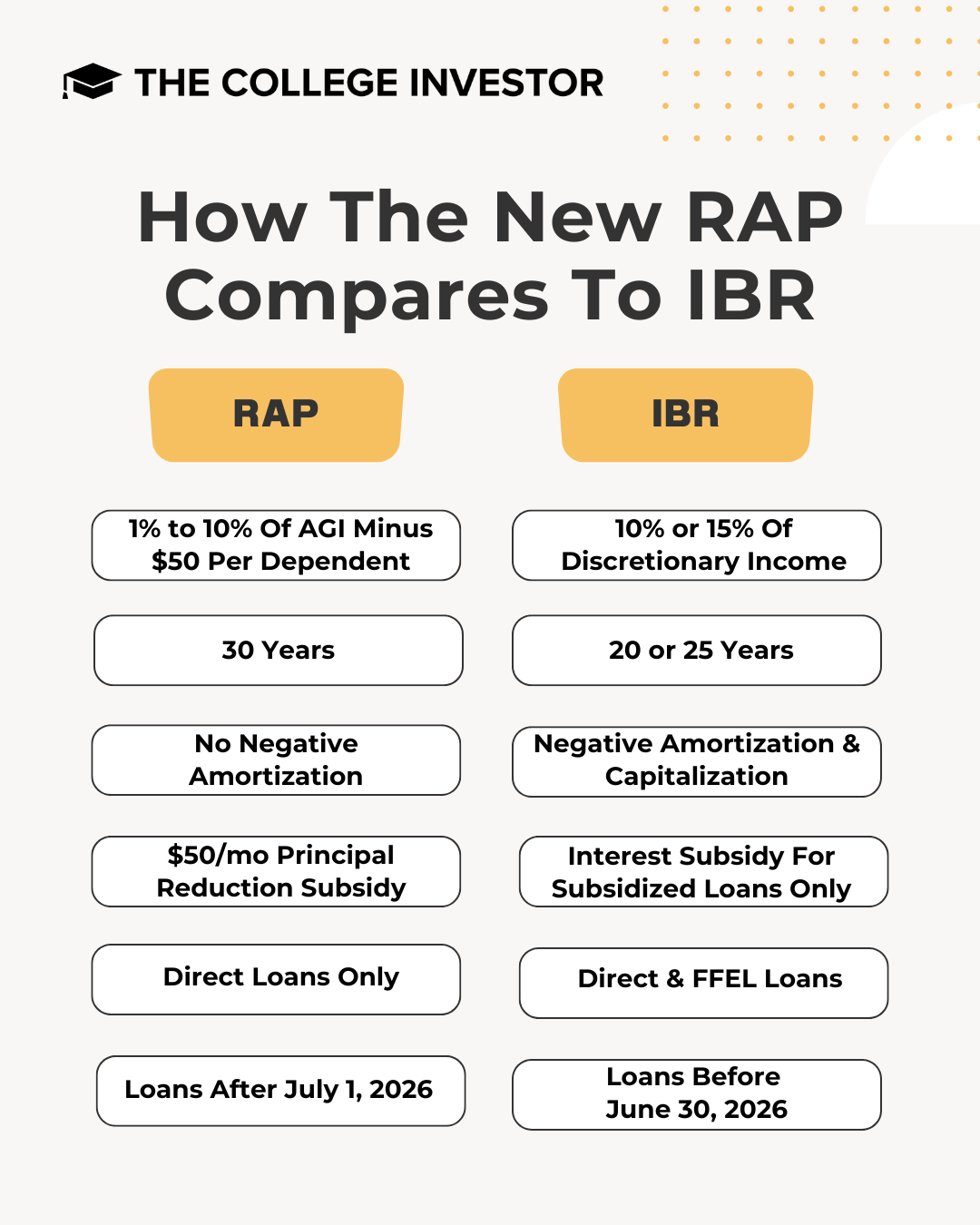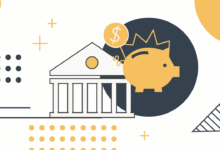

Key points
- Borrowers with federal loans issued after July 1, 2026 will choose between the new standard plan or a new income-based option called a Repayment Assistance Plan (RAP).
- Existing borrowers must move by July 1, 2028, from plans such as SAVE or PAYE to either RAP or income-based repayment (IBR).
- Original borrowers as well as borrowers remain excluded from RAP and modified IBR, trapping many in the standard plan without income-based options.
The final version of the One Big Beautiful Bill will reshape the future of student loan repayment.
Starting July 1, 2026, all new federal student loan borrowers will have only two options: the revised Standard Plan or the newly introduced Repayment Assistance Plan (RAP). For existing borrowers, the transition comes between 2026 and 2028, when legacy plans such as SAVE, PAYE and ICR will be phased out and borrowers will have to move to a RAP or IBR plan.
The RAP calculates monthly payments on a sliding scale, ranging from 1% to 10% of adjusted gross income. The main advantage is that unpaid interest is waived, and a monthly principal match of $50 helps eliminate the balance. Loans are forgiven after 30 years of repayment.
IBR, the other option left for existing borrowers, retains most of the old and new IBR features, depending on the origination date of the loan. Those with loans before July 1, 2014, pay 15% of discretionary income and get forgiveness after 25 years. Borrowers who took out loans after July 1, 2014, will pay 10% of discretionary income, with a 20-year forgiveness period. Discretionary income is defined as income greater than 150% of the federal poverty level.
Would you like to save this?
What borrowers should know
Borrowers with existing loans have time to evaluate which option makes the most sense. However, between July 1, 2026 and July 1, 2028, everyone in legacy income-based plans will need to transition to a RAP or IBR.
The law requires that all loans eligible for income-based repayment be repaid under the same plan, although there are exceptions for loans such as Parent PLUS.
A RAP can provide more flexibility regarding monthly payment amounts, especially for borrowers with children. IBR remains more familiar to existing borrowers and offers slightly faster forgiveness for many, especially those with moderate incomes.
You can view the Payment Assistance Plan Calculator here. You can see your IBR payment on our regular student loan calculator here.

Model scenarios: IBR vs. RAP
To better understand the differences between RAP and IBR, consider three typical borrower profiles. We assume that the borrowers all have $40,000 in student loans and live in the lower 48 states.
1. Single borrower with income of $50,000 and no children
- EPR:$228 per month
- rap: $167 per month
In this scenario, the RAP plan offers a lower monthly payment.
2. A married borrower with an income of $100,000 and has two children
- IBR: $443 per month
- rap: $650 per month
In this scenario, an IBR plan would be a better option.
3. A single borrower with an income of $80,000 and has one child
- IBR: $411 per month
- rap: $417 per month
In this scenario, the monthly payments are almost identical, but the IBR is slightly lower (and since it would also offer 20-year forgiveness, versus 30-year, it’s a better option).
Other scenarios
We ran a few other scenarios as well, and you can see that RAP typically has a lower monthly payment for borrowers who earn less than $80,000 per year. However, once you get past about $90,000 in AGI, IBR generally starts to become the lowest monthly payment plan.
But each case is different: marital status, dependents, income. You need to run the RAP calculator and look at your payment to check this.

Parent loans are also excluded
While the bill rewrites repayment options for most borrowers, Parent PLUS loans remain excluded. Only new Parent PLUS borrowers after July 1, 2026 will be eligible for the Standard Plan. Existing Parent PLUS borrowers have narrow paths to ICR/IBR through student loan consolidation.
If a borrower consolidates a Parent PLUS loan before June 30, 2026, they become eligible for an ICR and later move to an IBR. Those who have already dual-merged can move to IBR before the July 1, 2028 deadline.
However, these strategies are complex and have strict timelines.
Final thoughts
It’s frustrating to have to navigate new student loan repayment plan options. However, the new Repayment Assistance Plan (RAP) may be better for some borrowers than the current IBR options available.
For new borrowers, deciding on repayment plans will be easier — fewer plans mean less confusion.
But for existing borrowers, having to migrate and decide on a new repayment plan option will be overwhelming. It’s essential that you run the numbers and find out which plan may suit you best depending on your financial situation.
Frequently asked questions
What is a Repayment Assistance Plan (RAP)?
The Repayment Assistance Plan (RAP) is a new income-driven repayment plan that will be available to new borrowers after July 1, 2026.
How does the resettlement program differ from the revised income-based repayment plan?
RAP is based on monthly payments as a percentage of AGI, with a minimum of $10. It also has principal and interest support. IBR bases monthly payments on discretionary income, with a minimum payment of $0 per month. It doesn’t have any subsidies.
Who should transition to a modified IBR or RAP?
Any existing borrowing in ICR, PAYE or SAVE will have to move to IBR or revised RAP after 1 July 2026.
Are Parent PLUS loans eligible for RAP or modified IBR?
Parent PLUS loans are not eligible for RAP. Parent PLUS loans can be eligible for IBR, if the loan is consolidated when repaid under an income-driven repayment plan by June 30, 2026.
Don’t miss these other stories:
Federal vs. Private Student Loans: Which is Better?
Stop tax offsets due to student loan debt
Sallie Mae vs. College Ave Student Loans: Two Options for Private Student Loans
Editor: Colin Greaves
The post RAP vs. IBR: What Student Loan Borrowers Need to Know appeared first on The College Investor.




